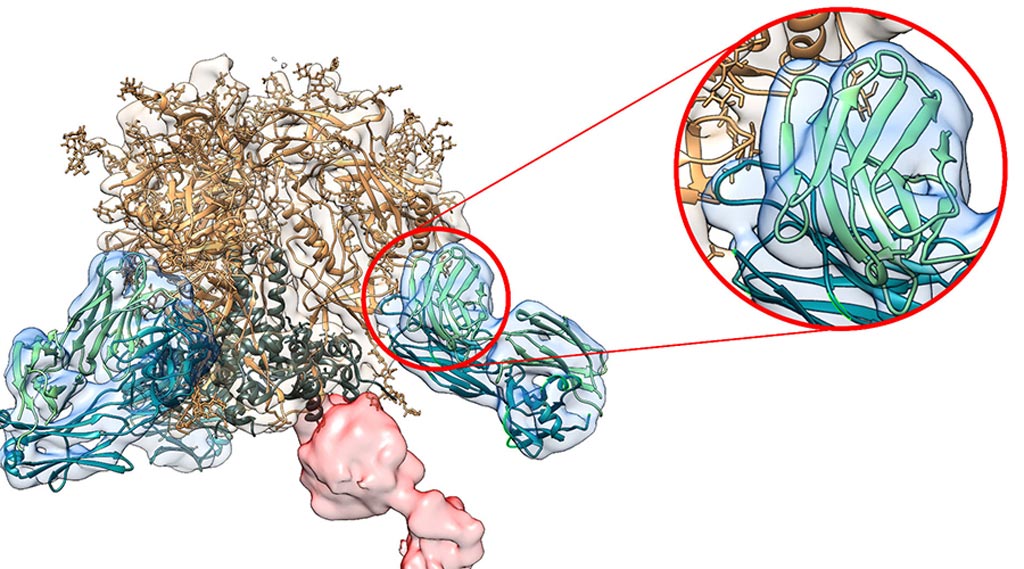Electron Microscopy Technique Boosts Development of Antibody-Based Vaccines
By LabMedica International staff writers
Posted on 22 Aug 2018
The novel use of an electron microscope imagining technique enabled vaccine developers to follow the design process of structure-based vaccines in real time.Posted on 22 Aug 2018
Characterizing polyclonal antibody responses via currently available methods is inherently complex and difficult. Mapping epitopes in an immune response is typically incomplete, which creates a barrier to fully understanding the humoral response to antigens and hinders rational vaccine design efforts.

Image: With the new method, the researchers were able to image polyclonal antibody/HIV envelope complexes at a resolution of 4.7 angstroms. At this resolution, the researchers discovered that in rabbits, antibodies specific to a vulnerable site on HIV\'s outer glycan layer (blue shapes) are structurally highly convergent and closely resemble a previously isolated monoclonal antibody (green and teal ribbons) (Photo courtesy of Dr. Lars Hangartner, Scripps Research Institute).
To improve the antibody design process, investigators at the Scripps Research Institute (La Jolla, CA, USA) developed a method for characterizing polyclonal responses by using electron microscopy to produce negatively stained images of viruses bound to potential neutralizing antibodies. They applied this method to the immunization of rabbits with an HIV-1 envelope glycoprotein vaccine candidate, BG505 SOSIP.664.
The investigators reported in the August 7, 2018, online edition of the journal Immunity that they detected known epitopes within the polyclonal sera and revealed how antibody responses evolved during the prime-boosting strategy to ultimately result in a neutralizing antibody response. They uncovered previously unidentified epitopes, including an epitope proximal to one recognized by human broadly neutralizing antibodies as well as potentially distracting non-neutralizing epitopes.
High-resolution, three-dimensional images of the antibodies with their viral targets were obtained using cryo-electron microscopy (cryo-EM). Cryo-EM is an analytical technique that provides near-atomic structural resolution without requirements for crystallization or limits on molecular size and complexity imposed by the other techniques. Cryo-EM allows the observation of specimens that have not been stained or fixed in any way, showing them in their native environment while integrating multiple images to form a three-dimensional model of the sample.
"We can now watch antibody responses evolve almost in real time," said senior author Dr. Lars Hangartner, associate professor at the Scripps Research Institute. "This method has the potential to change the pace at which we can develop vaccines."
Related Links:
Scripps Research Institute













